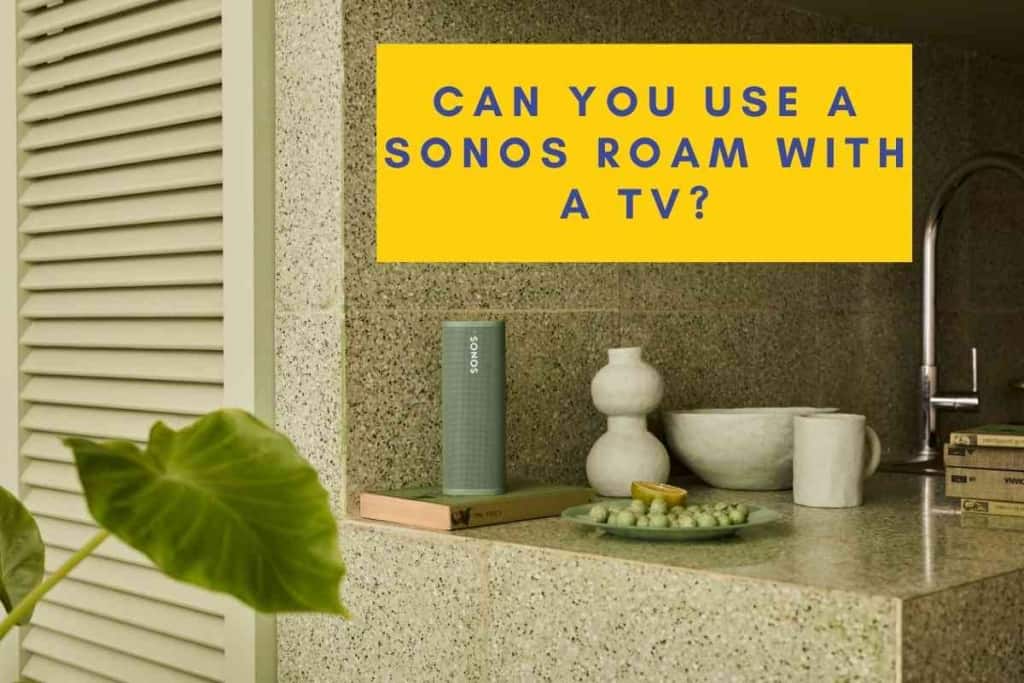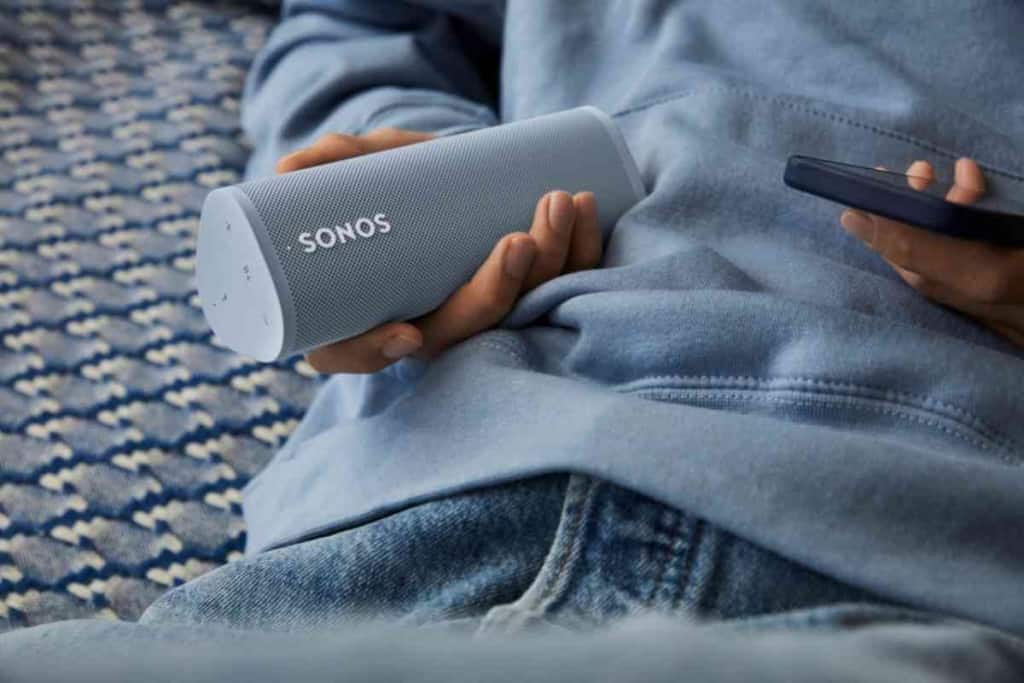Can You Use A Sonos Roam With A TV? A How-To Guide
Did you know that you can use your Sonos speaker to control your TV sound?
Sonos Roam is a portable, waterproof Bluetooth speaker that delivers incredible sound wherever you go. Whether you’re at the beach, in the park, or just hanging out in your backyard, Roam makes it easy to enjoy your favorite music, podcasts, and more.

Table of Contents
- How to connect a Sonos Roam to a TV
- Connecting Sonos Roam to TV Benefits
- How To Turn Off Bluetooth
- Downloading Sonos App
- Sonos Roam Features
- How to Charge Sonos Roam
- Pairing Bluetooth Devices to Sonos Roam
- How to Turn Off Sonos Roam
How to connect a Sonos Roam to a TV
To connect a Sonos Roam to your TV using an HDMI cable, simply:
- Place your Roam within 30 feet of your TV.
- Turn on both devices and enable Bluetooth on your TV.
- On your Roam, hold the Bluetooth button for 3 seconds. The light will flash blue, indicating that the speaker is in pairing mode.
- Select “Sonos Roam” from the list of available Bluetooth devices on your TV.
In this blog post, we’ll discuss how to set up and use the Sonos Roam feature with your TV. We’ll also share some tips on getting the most out of this useful feature. So, if you’re looking for a way to improve your TV audio experience, read on!
Connecting Sonos Roam to TV Benefits
Connecting your Sonos Roam to your TV has a number of benefits.
- First, it gives you the ability to control the sound of your TV with your voice.
- Second, it allows you to enable subtitles on your TV, so you can still follow the action even if there is a lot of background noise.
- Third, it allows you to play music from your TV through your Sonos speakers, so you can create a more immersive listening experience.
- Fourth, it gives you the ability to use your TV as a giant speaker, so you can fill a large room with sound without having to turn up the volume on your TV.
- Finally, it allows you to take advantage of all the features of your Sonos system, such as party mode and multi-room audio.
So if you’re looking for a way to get more out of your Sonos speakers, connecting them to your TV is a great option.
How To Turn Off Bluetooth
To turn off your Sonos Roam, press and hold the play/pause button for three seconds.
The white light on the front of the speaker will turn off, indicating that the speaker is no longer in Bluetooth mode. You can also disable Bluetooth by opening the Sonos app and selecting the “Settings” tab. Then, select “Voice & Accounts” and scroll down to the “Advanced Settings” section. Here, you will find the option to disable Bluetooth.
Once you have turned off Bluetooth, you will no longer be able to wirelessly connect your Sonos Roam to any other devices. However, you can still use the speaker in wired mode by connecting it to a 3.5mm audio input.

Downloading Sonos App
The Sonos app is a free download for your mobile device that allows you to control your Sonos system from anywhere.
With the app, you can create custom playlists, manage your music library, and adjust the settings of your Sonos products. You can also use the app to connect your Sonos system to other devices on your networks, such as your computer or smartphone. The Sonos app is available for both iOS and Android devices.
To download the app, visit the App Store or Google Play store and search for “Sonos.” Once you have found the app, tap “Install” and follow the prompts to complete the installation. After the installation is complete, launch the app and follow the instructions to set up your Sonos system.
Sonos Roam Features
The Sonos Roam is a portable, waterproof Bluetooth speaker that offers great sound quality in a small package. The Roam is designed to be rugged and durable, with an IPX67 rating, which means it can be submerged in up to one meter of water for 30 minutes.
The speaker also features a rubberized exterior that helps to protect it from bumps and drops. Despite its small size, the Roam delivers big sound thanks to two Class-H digital amplifiers and a custom-designed driver. The speaker also has an advanced acoustic architecture that provides rich bass and clear highs.
The Roam is easy to use, with one-touch controls for powering on/off, playing/pausing, and skipping tracks. The speaker also supports wireless charging, so you can keep it powered up while on the go. Whether you’re at the beach or in the backyard, the Sonos Roam is a great choice for enjoying your music outdoors.
How to Charge Sonos Roam
The Roam can be charged in two ways: via the included USB-C cable or wirelessly using the optional Sonos Charging Base. To charge the Roam with the USB-C cable, simply connect the cable to the speaker and plug it into a power outlet.
For wireless charging, place the speaker on the Charging Base and make sure that the Base is connected to a power outlet.
The Roam will begin charging automatically and will display a white light when it is fully charged. If you’re looking for an easy way to keep your Sonos Roam charged and ready to go, wireless charging is the way to go.
Pairing Bluetooth Devices to Sonos Roam
To pair your Bluetooth device to the new Sonos Roam, first put your Roam in Bluetooth discovery mode by pressing and holding the button on the back of the device for three seconds.
Then, open the Bluetooth settings on your phone or other device and look for Roam in the list of available devices. When you see Roam listed, select it to initiate pairing. Once paired, you’ll be able to control your Sonos Roam with your Bluetooth device.
You can also use the Sonos app to manage everything from speaker settings to music playback. So whether you’re looking to boost the bass or skip to the next track, the Sonos app has you covered. With just a few taps, you can turn your Sonos Roam into the ultimate portable sound system.
How to Turn Off Sonos Roam
To turn off Sonos Roam, press and hold the power button for three seconds. The LED will glow red, indicating that the speaker is turned off.
You can also turn off the speaker by opening the Sonos app and selecting “Roam” from the menu. Then, tap the power icon in the top right corner of the screen.